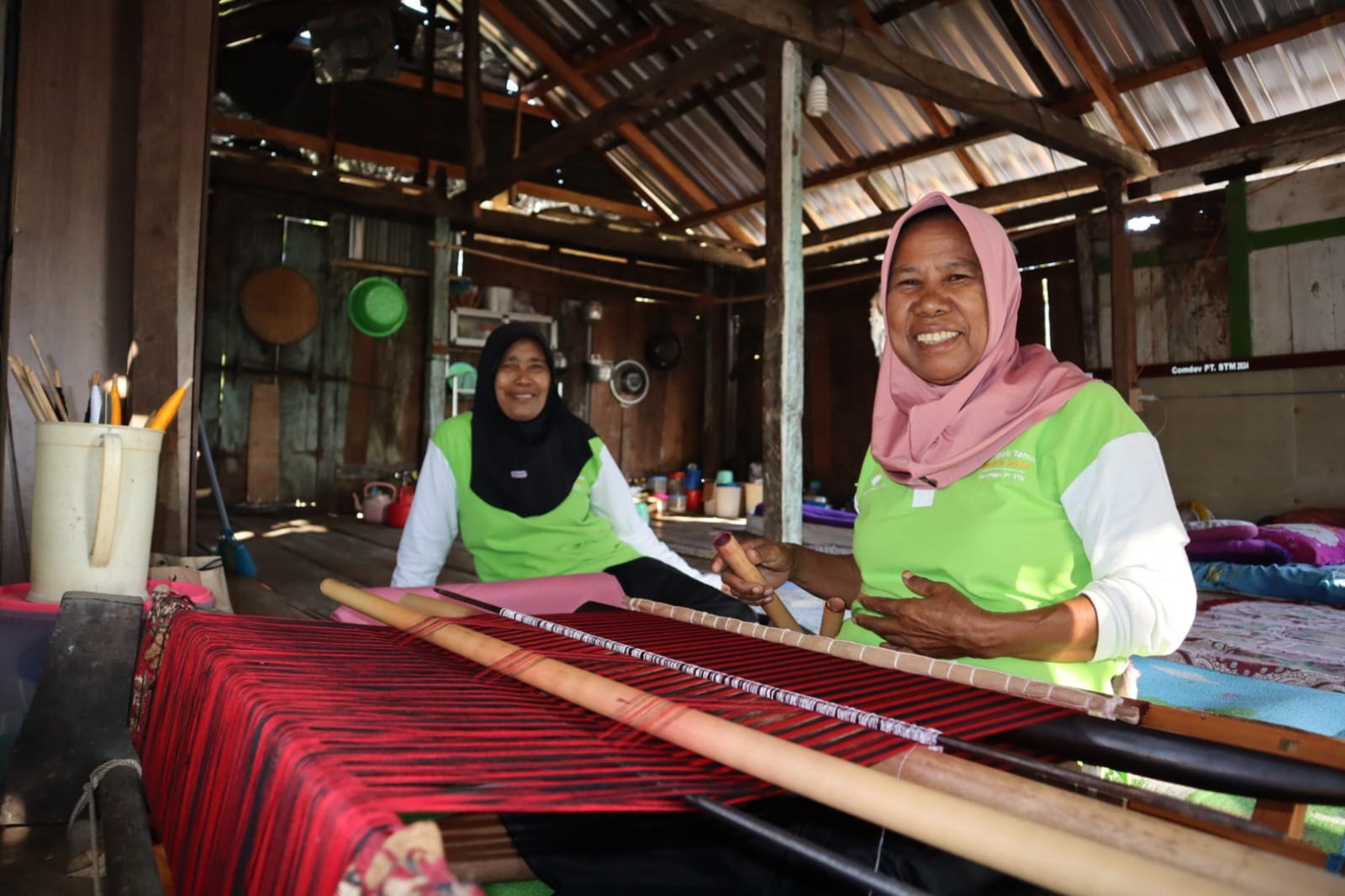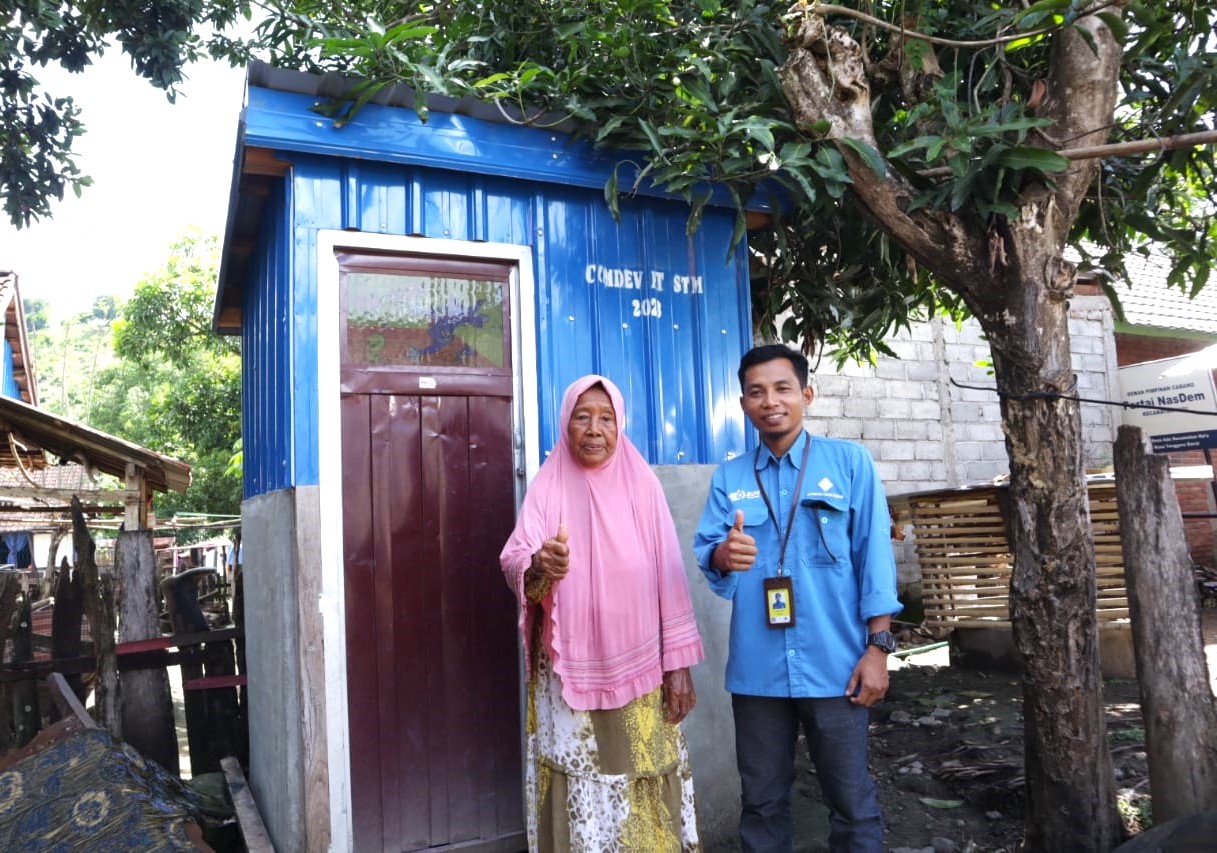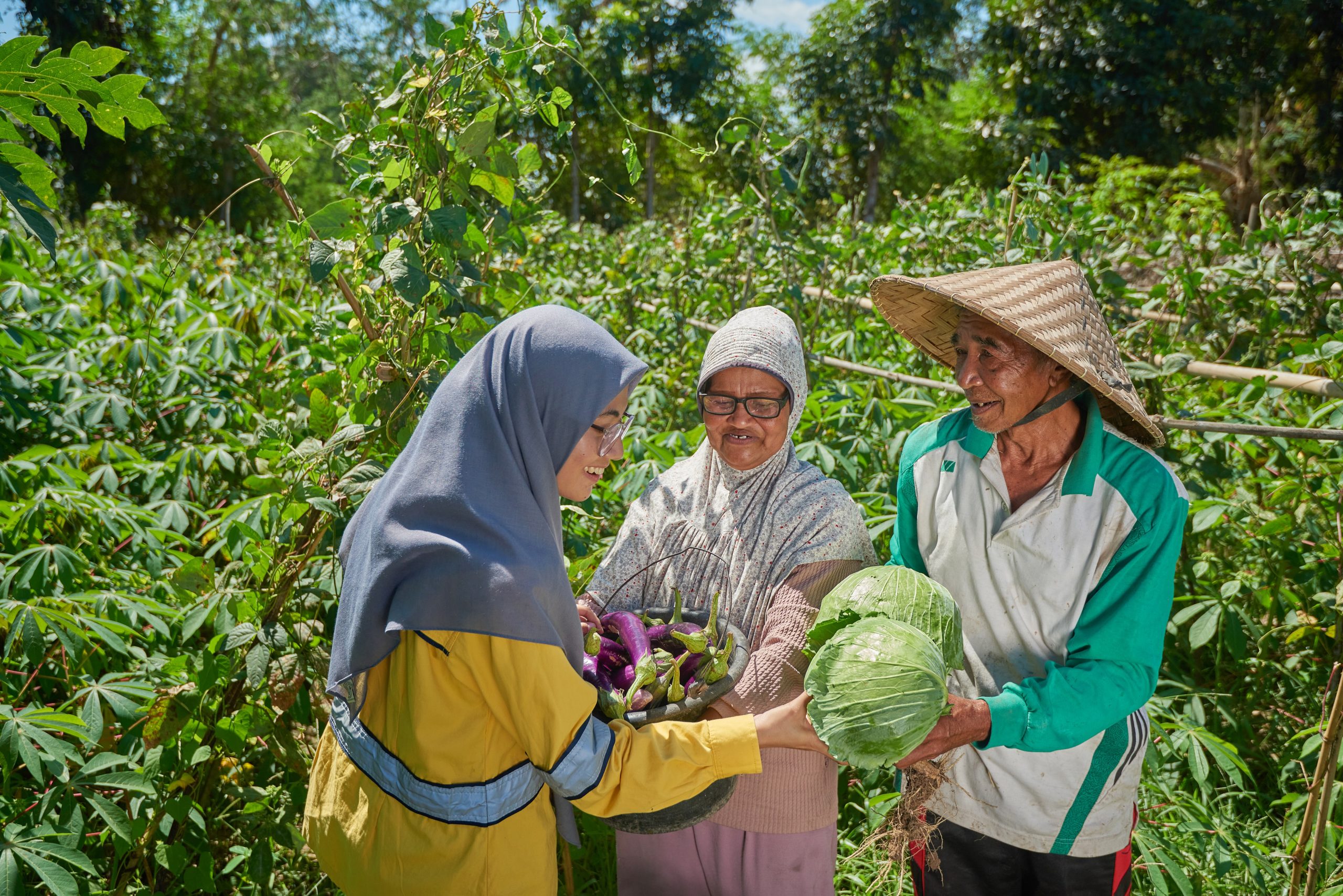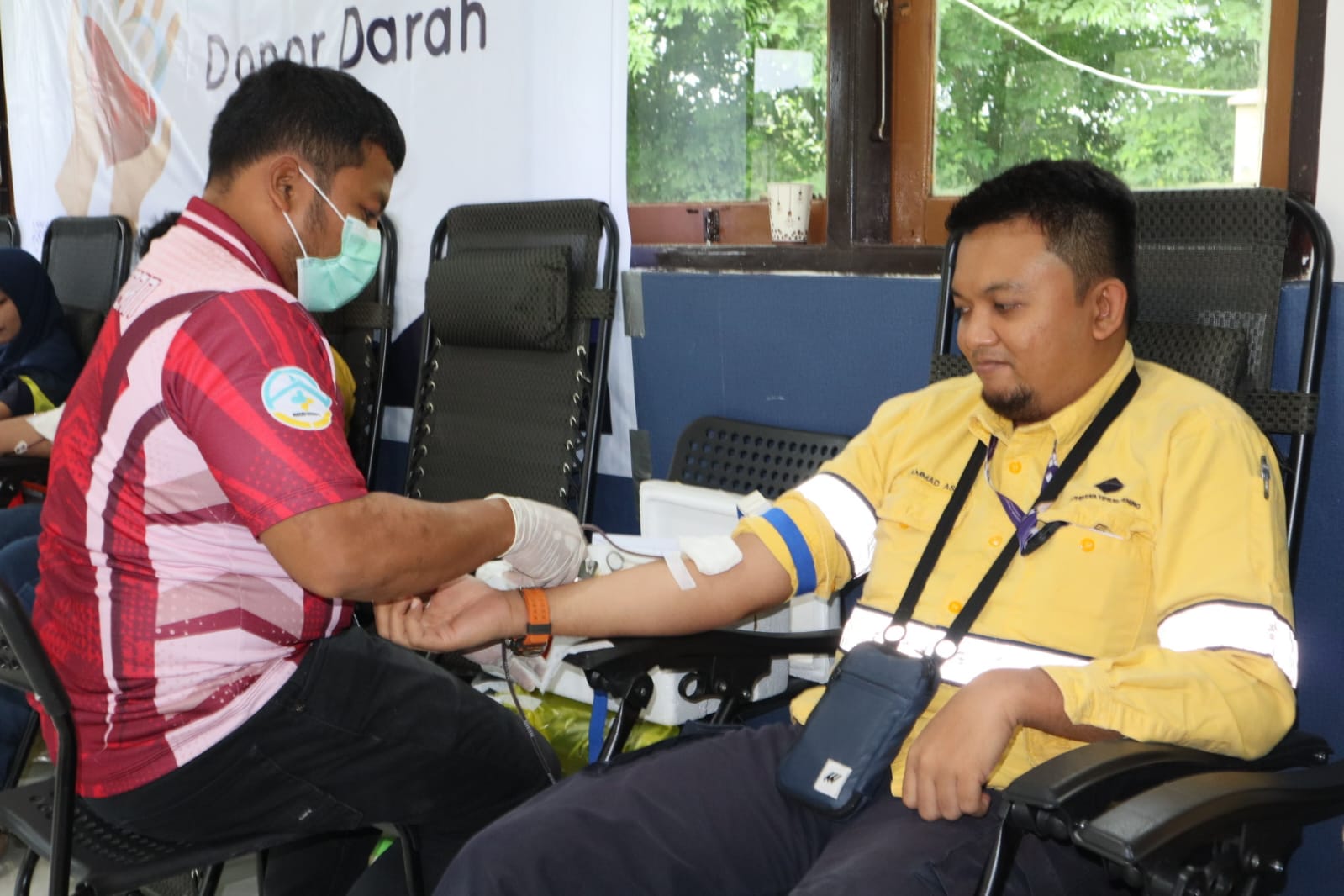
Dompu, August 29, 2024— Aging doesn’t make Siti Nursa’s hands lose rhythm. Her fingers are agile in arranging the colored strings on the wooden loom. Her eyes are sharp to ensure that each strand of string is positioned to form a pattern. After a series of complicated and time-consuming traditional weavings, the Muna Pa’a, which has become the pride of the Dompu people, is ready.
Muna Pa’a is the authentic weaving of Dompu Regency, West Nusa Tenggara Province. During the sultanate period, the sultans and nobles of Dompu used this cloth to show their regal status. The valuable historical value of this three-dimensional patterned fabric led to its designation as an Intangible Cultural Heritage by the Ministry of Education, Culture, Research and Technology of the Republic of Indonesia in 2023.
The designation has made the spirit of preserving the Muna Pa’a cultural heritage even more resounding in Dompu Regency. Kancira Daha, a weaving group from the Hu’u sub-district, plays a role. The group of six women continues to develop its capacity to contribute to cultural preservation while improving the local economy.
Siti Nursa (60) is the leader of the Kancira Daha weaving group. According to her, before the group was formed, the women in her village used to weave cloth for personal use. They made Nggoli weaving, which is typical of the Mbojo tribe, from Bima and Dompu, and also fabrics with simple motifs. Their shared interest made them work in groups. The name Kancira Daha itself comes from the name of the local sub-village and village.
Nursa explained that this group runs independently with full limitations. To improve the quality of their weaving, they needed adequate facilities or intensive mentoring. However, things improved when PT Sumbawa Timur Mining (STM), a company conducting copper exploration in Hu’u Sub-district, paid more attention to the Kancira Daha weaving group in 2022.
STM has provided a lot of support since the mentoring began. The company opened our knowledge about the weaving business, increased promotion, and facilitated market access. We also received mentoring with woven fabric production equipment and display cases to store our products.
Nursa added that among all these supports, she is most grateful for the company’s willingness to teach the Kancira Daha weaving group to make Muna Pa’a cloth. Nursa and her partners are familiar with Muna Pa’a and know that this type of weaving is one of Dompu’s cultural heritages, but they need to be used to making it. Nursa said that the technique and pattern of making Muna Pa’a are different from the woven fabrics she usually makes.

“So far, we have only heard and seen about Muna Pa’a weaving. It is said that this weaving has existed since the sultanate era. We just learned to make Muna Pa’a with the STM mentoring program. This is different from the weaving we usually make because there are more creations and we have to be more careful,” said Nursa.
While it took some adapting, slowly but surely, the Kancira Daha weaving group was able to produce its own Muna Pa’a cloth. The time required for a weaver to make a one-meter Muna Pa’a cloth is 14 days at most. This takes twice as long as ordinary woven fabrics. However, the group members claim to enjoy every process.
From an economic perspective, the Muna Pa’a weaving craft can provide additional income for Kancira Daha members, some of whom work as vegetable farmers. The price of a one-meter Muna Pa’a cloth is around Rp600,000. “The mentoring by STM has improved our ability to make traditional fabrics and helped us to realize economic independence,” said Nursa.
Since being mentored by STM, Kancira Daha and its products have become more widely known. The group was facilitated to connect with the Cooperatives and SMEs Office and the Industry and Trade Office of Dompu Regency for better business development. In addition, Kancira Daha also participated in local business exhibitions, such as the Dompu Expo with STM, in June 2024 and is likely to be involved in other larger exhibitions.
“Alhamdulillah, our products are increasingly recognized. We have made 22 Muna Pa’a orders for government offices, including those used by the Regent of Dompu Regency and his wife. We also collaborate with tourism entrepreneurs at Lakey Hu’u Beach to make souvenirs. Also, various orders are coming from STM for domestic and foreign purposes,” Nursa explained.
Nursa and the Kancira Daha weaving group members greatly appreciate the community empowerment program initiated by STM in the economic field. The program contributes to preserving traditional fabrics in Dompu Regency, especially the Muna Pa’a weaving. The program also allows the women of Daha Village to strengthen the family economy.
“The support from STM means a lot to us, and hopefully, more parties will care about the development of MSMEs. We hope that this traditional weaving tradition is not only carried out by older people like me but also by the younger generation. This woven fabric must continue to exist and become the hallmark of Dompu Regency,” she said.
—
Community empowerment is an integral part of the development of PT Sumbawa Timur Mining’s project. Learn more about our other programs here.
—








